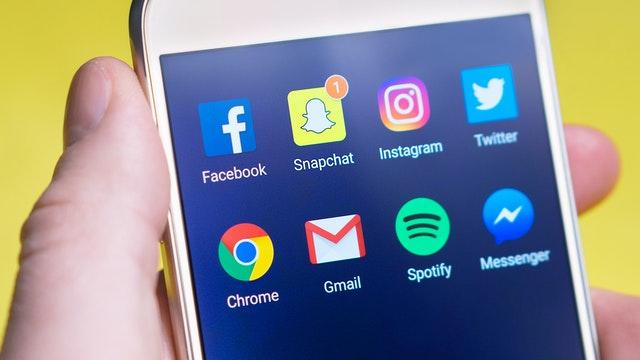Have you recently invested your marketing budget in social media ads to increase brand awareness?
Hiring social media marketers on your team may make sense to maximize the power of different social media platforms. Major social channels, such as Facebook, Instagram, TikTok, or LinkedIn, allow you to sell and promote your products and services.
After all, as many as 4.48 billion people worldwide are on social media apps every day.
However, if you aim to create a more organic way of increasing engagement rates with your target audience, it’s time to take advantage of email marketing.
Sending emails may sound like a thing of the past. But, believe it or not, it’s shown to be one of the most effective digital marketing strategies for businesses today.
With more reach comes more conversions and more sales from your marketing efforts.
In this article, we will convince you why email marketing still outperforms social media for building brand awareness.
Email Marketing vs Social Media
A meticulous Content Marketing Institute (2020) study has shown that both email marketing and social media are the two most organic content distribution channels.
However, email marketing is still highly effective despite the rapid growth of social media sites and other digital marketing channels.
Social media may be the leading digital marketing channel at 89%, but marketing emails come second at 87%, which is only 2% away.
Therefore, if you want to grow your brand online, missing out on the second most effective digital marketing strategy would be a waste.
Even if you have a massive amount of social media followers and thousands of likes on your Facebook page, email marketing could build brand awareness more.
So forget the long, dull email advertisements you’ve seen in your inbox. It’s time you use these three highly effective marketing strategies in writing emails that convert.
How to Write Effective Marketing Emails
 1. Embed trigger emails
1. Embed trigger emails
A trigger email marketing campaign is an automated message marketers send to let target audiences know we value and appreciate their subscriptions.
Simply put, it is a response to an email subscriber’s action.
Some examples of a trigger email marketing strategy are welcome messages, where you can thank the email subscriber for taking action.
It can also be a re-engagement email or a follow-up to a particular transaction to offer information or a call to action to a subscriber.
The best email marketing campaigns add a personal touch to connect or “trigger” their email subscribers utterly because it works.
Embedding trigger email marketing campaigns will depend on your brand and industry.
For instance, if you sell products, you can trigger your paying customers by reminding them to complete their registration or check out while the product is still available.
A great example of this would be Uber’s email marketing campaign. It’s almost wholly triggered, and it works wonders.
New registrations trigger a welcome email with a summary of benefits for user accounts and a quick guide to getting started with the service.
The first ride triggers a thank you, a discount for getting friends to sign up, and an email link to share the experience with others on social media.
Uber’s techniques work because their email campaigns are focused on simplicity, honesty, and personalization.
2. Tag visitors for follow-up emails
New email subscribers may appreciate the welcome and thank you emails.
However, these email marketing campaigns will only be effective if you have heard more from them in a while or ever again.
You can use specific tags to reach out and achieve customer retention.
This is also known as a follow-up email. Email subscribers will be tagged for a deeply personalized and customized message inviting them back.
This email marketing campaign is also vital and effective for those who work in relationship-based industries such as healthcare.
Think it’s a hassle? Then, take a look at the data:
- An article by Jason Zook said that sending follow-up emails resulted in him getting over 75% of all the deals.
- Email marketing expert and Amerisales founder Lathan Fritz also said that tagging customers in email marketing campaigns gained him 30 to 50 monthly appointments for his dental clients.
- Another study also states that follow-up emails gain an average click-through rate of 22.4%.
Re-engaging with your customer base is as essential as searching for new potential customers.
Email marketing campaigns should be connected to the consumer’s past experiences by including phrases such as, “We noticed you bought this last time,” to lure them back.
3. Make every word count
Engaging content is still king, even in email marketing.
Even though you’ve already sent an email welcoming, congratulating, re-engaging, or offering discounts to your beloved subscriber, it all boils down to what is written in the email.
At the end of the day, consumers value an email that includes brief but helpful and relevant content. Every email sent in your brand’s name should always be short, sweet, and helpful.
Take Skimm’s short but sweet email marketing strategy as an example. The brand’s daily newsletter concentrates on giving trending news to their valued email subscribers cleverly and hilariously.
They let their target audience digest news in less than five minutes. Skimm also does catchy punchlines to deliver the news of the day.
In Summary… 
Social media channels may continue to grow and evolve, but email marketing is still more effective. Email marketing can gain more reach than just relying on social media campaigns.
To ensure more customer engagement, don’t forget to communicate with your consumers through personalized, customized, and timely marketing material.
In saying that, you could integrate social media marketing into your email campaign. Both social media and email marketing have their unique benefits, which, when combined, can create a really effective marketing strategy.
Explore how InboxAlly can revolutionize your email strategy, ensuring your messages not only land in the inbox but also captivate your audience. Don’t let your emails get lost in the noise.

 1.
1. 